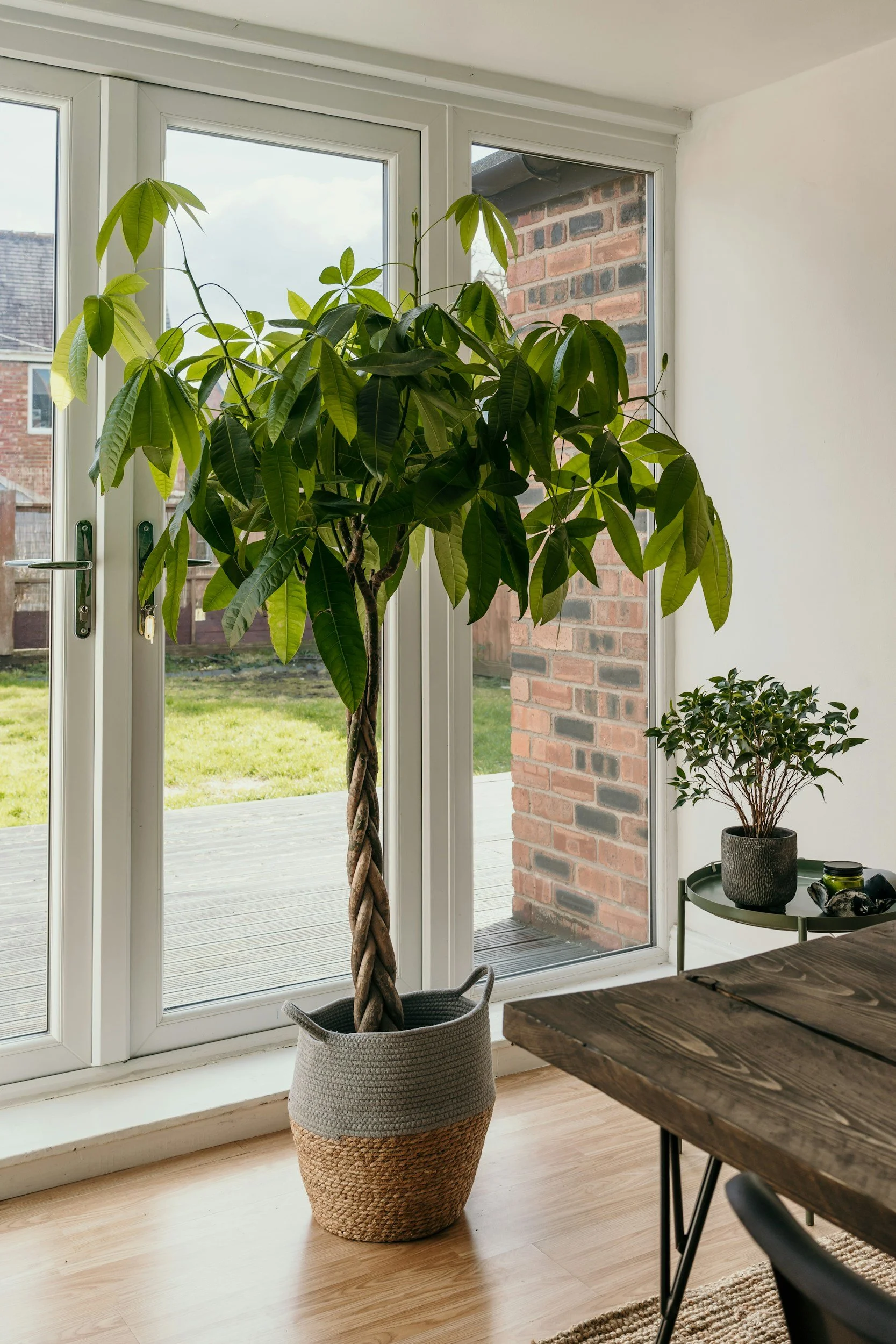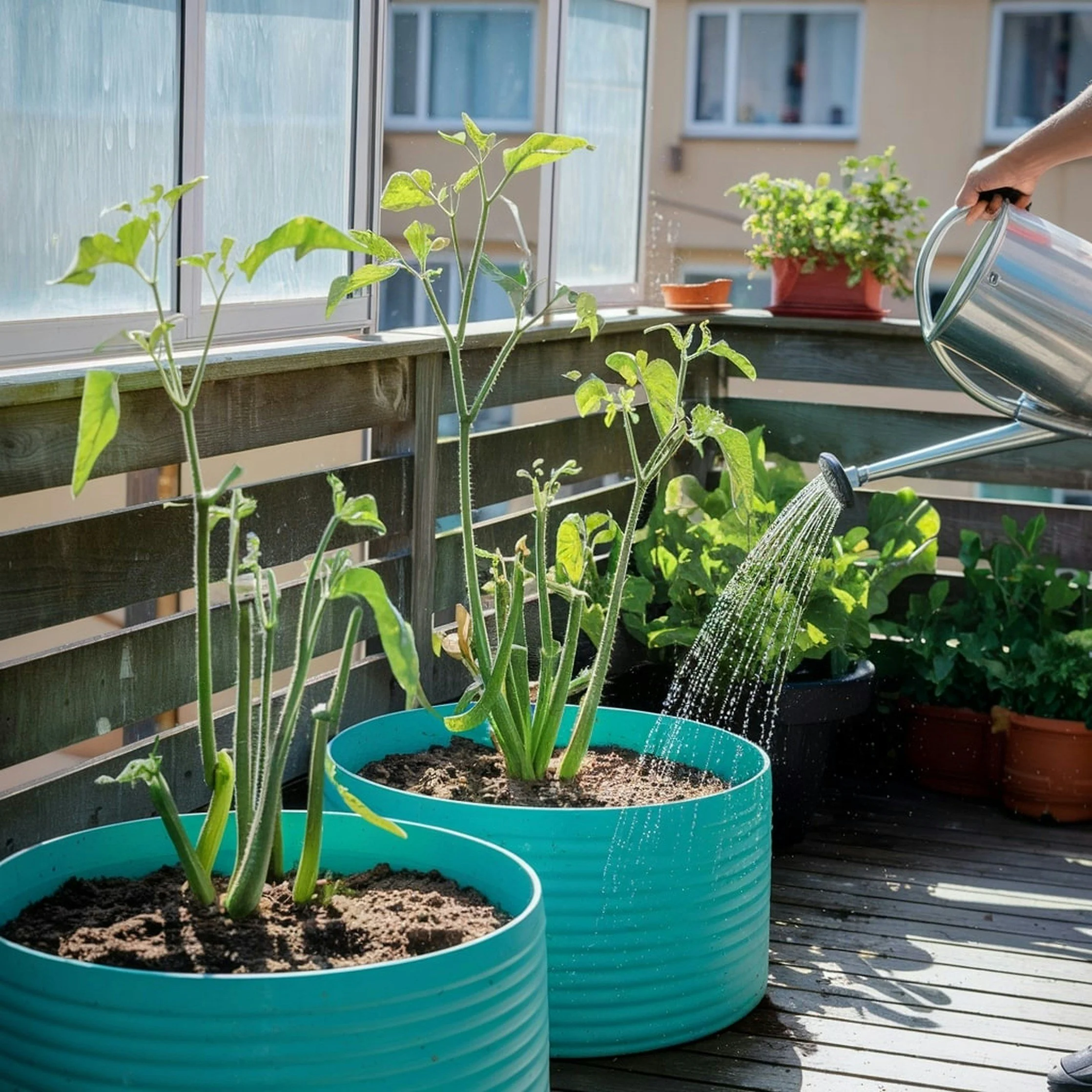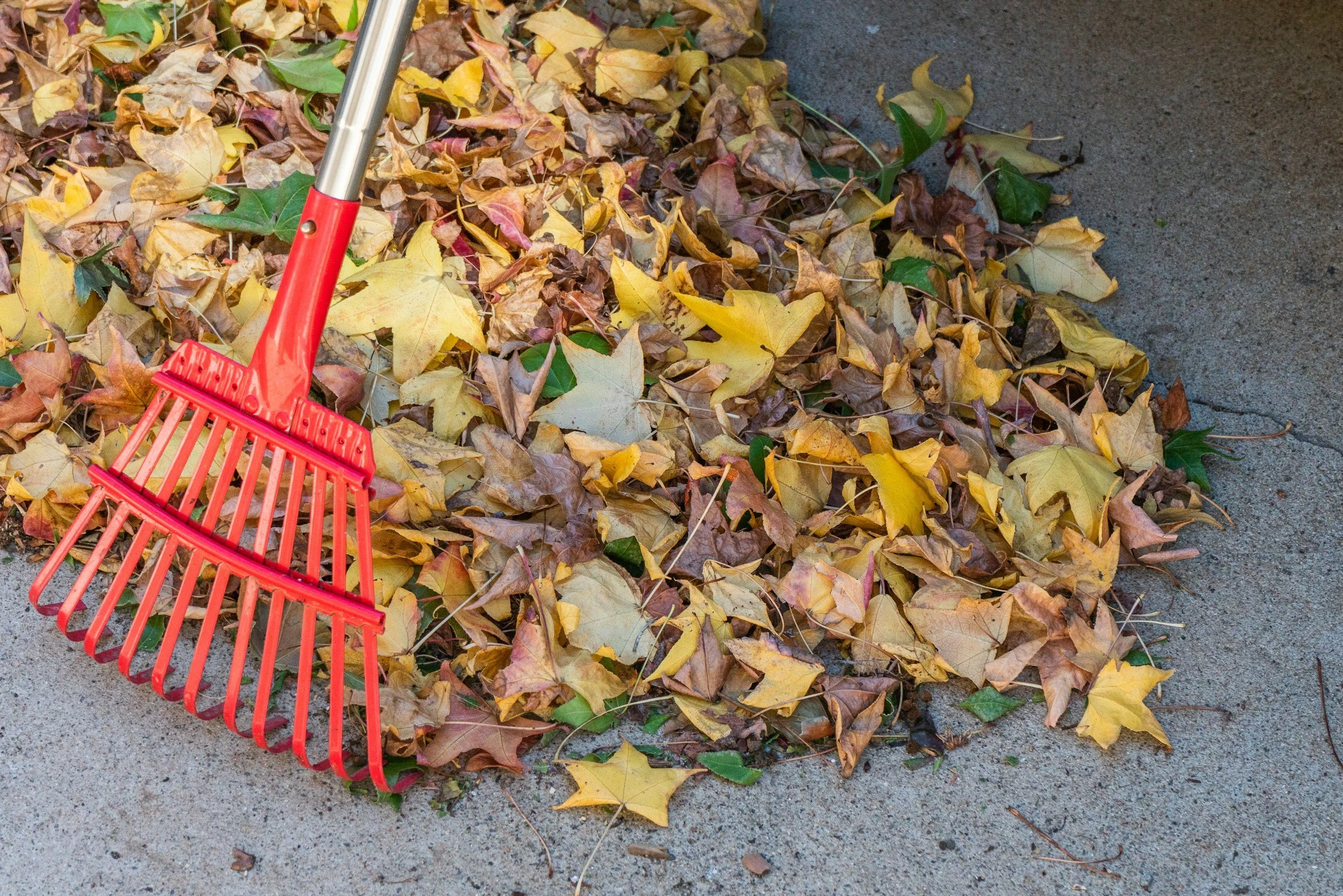The Complete Guide to Houseplant Pest Control in Winter: Fungus Gnats, Mealybugs, Thrips, and More
/Winter can be one of the most challenging times for houseplants. Shorter days, weaker sunlight, dry indoor air, and unpredictable watering habits create a perfect storm that stresses plants. Stressed and weak plants emit chemical distress signals that attract pests.
When your indoor environment shifts, so does the ecosystem in your potting soil and on your plant leaves. This can create the perfect conditions for plant pests. Fungus gnats multiply in damp soil, spider mites thrive in warm, dry air, and mealybugs and thrips spread rapidly if left unchecked.
The good news is that you can keep your indoor garden thriving all winter long with the right knowledge and a few strategic habits.
This article walks you through the steps of how to identify, prevent, and treat the most common winter houseplant pests. These include fungus gnats, mealybugs, thrips, spider mites, aphids, and scale insects, which you may have already seen taking up residence in your houseplants. And there’s no need to resort to using harsh chemicals: natural, research-backed methods will do the trick much more effectively.
Want a printable version? Download my free Houseplant SOS Kit, a two-page cheat sheet with quick fixes and a 7-day plant-care routine.
Why Houseplant Pests Get Worse in Winter
The climate conditions inside of the typical home shift dramatically in winter. When it’s cold outside we aim to keep it warmer inside. Using heat dries out the air, while the available sunlight coming through the windows is less intense than in the warmer spring and summer months. Understanding how these changes affect pest populations can help you prevent infestations before they start.
1. Low Light = Slow Growth
Shorter days mean less available sunlight, which also means that your houseplants will not be able to photosynthesize as much. This also slows root activity, water uptake, and plant metabolism. As a result, the soil in potted plants stays damp longer after watering, creating the perfect breeding ground for fungus gnat larvae.
2. Indoor Heating = Dry Air
The air from indoor heating systems tends to be very dry. Unless you have a whole-home humidifier installed, the heated air in your home in winter will reduce humidity levels, which increases leaf stress. The warm dry air conditions encourage the entry and explosion of spider mite populations.
3. Overwatering Is More Common in Winter
Plants drink less when they aren’t actively growing. Many people water on autopilot even though their plants need less water in the winter months. If you keep your plants on a daily or weekly watering schedule without first checking them to make sure they actually need water, they are likely to have soggy soil. This creates the conditions for outbreaks of fungus gnats.
4. Plants Brought Indoors Carry Hidden Pests
During the growing season, outdoor plants pick up a number of pests that you may already be aware of. This means that their offspring are likely to be already embedded in the soil of any plants you are brining indoors for the winter. Some of the most common include spider mite eggs, mealybug clusters, thrip larvae, and fungus gnat eggs, which reside in soil. Once these baby pests are inside your home, with no natural predators to keep them in check, their populations can expand rapidly.
Fungus Gnats: The Most Common Winter Houseplant Pest
If there’s one pest that tends to cause the most headaches in the winter season it’s the fungus gnat. Fungus gnats (Bradysia spp.) are tiny black flies that hover around soil. Adult gnats barely damage plants (they just annoyingly fly around your home), but their larvae do a lot of damage. Here’s how to identify them:
Adults:
small, mosquito-like
weak fliers
attracted to light
hover around soil after watering
Larvae:
translucent bodies with black heads
live in the top 1–2 inches of soil
feed on decaying organic matter and young roots
The larvae of fungus gnats feed on the tender root hairs of your plants. This leads to yellowing leaves, slowed growth, wilting (in severe cases), and the loss of any tender seedlings you’ve recently planted.
Scientific Insight: Rapid Reproduction Indoors
Research by the Agricultural Extension of the University of Wisconsin-Madison shows that fungus gnats reproduce very quickly in warm indoor settings. Their eggs hatch in as few as 3–6 days. After this, the larvae feed on your plants for 1–2 weeks, after which they go into a pupal stage (the resting, non-feeding stage in which the larvae transform into adults). Pupation takes anywhere from 3–7 days. After their transformation into adults, fungus gnats live only for about 1 week. However, each female lays up to 200 eggs, which means that, left unchecked, you’ll have hundreds of new fungus gnat larvae in your home in just a few weeks.
Quick Fixes for Fungus Gnats (Do These Today)
These are the fastest, most effective actions you can take, and they all appear in your free Houseplant SOS Kit.
1. Let the Top 1–2 Inches of Soil Dry Out
Larvae need moist soil to grow and hatch and can’t survive in dry soil. Overwatering is the number one cause of fungus gnat infestations, so addressing this problem is key to preventing infestation.
2. Switch to Bottom Watering
Place your potted plant in a tray or other shallow reservoir and water it from the bottom. You may need to let the plant sit in the water for anywhere from 20 minutes to an hour. Clay pots absorb water faster, while plastic pots take longer. Smaller pots also need less time to take up water, while larger pots will need more time. You can also make a simple wicking system for your plants by running a paracord through the soil of your plant and out of the bottom hole, then placing the other end in a reservoir of water. This also works great as a self-watering system if you have to be away from your plants for a few days or so.
By watering your plants from the bottom, you’ll be able to keep the top layer of soil dry while still hydrating their roots.
3. Add a Soil Barrier
Since fungus gnats need soil to lay their eggs in, you can eliminate this ideal environment for them. Remove the top layer of soil in your plant (you’ll also be removing any fungue gnat eggs already pleasant and compost it or add it to your soil outdoors). Then cover the soil surface of your potted plants with coarse sand, horticultural grit, or even aquarium gravel. This way, adult fungus gnats won’t be able to reach the plant’s soil to lay their eggs.
4. Use Sticky Trap
Sticky traps may be unsightly but they are effective! The methods named above work well to eliminate fungus gnat eggs or larvae; however, they won’t do anything to eliminate adults. You can hang yellow sticky cards on a string near your plants’ soil to catch any adults flying around. I like to run a wooden skewer through the sticky trap and then stick it in my soil.
5. Try a Mild Hydrogen Peroxide Flush
A mild hydrogen peroxide flush can also be an effective way of killing fungus gnat larvae. For this method, you’ll need to mix 1 part 3% hydrogen peroxide to 4 parts water. Water your plants with the solution (spraying won’t be effective). This kills larvae on contact and aerates the soil. Keep in mind, though, this method should not be used often, but only occasionally.
These steps are printable in the Houseplant SOS Kit — download it here.
Long-Term Fungus Gnat Control & Prevention
Getting rid of the fungus gnats you see and the eggs they’ve just laid isn’t hard when you use the methods above. However, it’s equally important to implement long-term controls to prevent new populations from taking root in your plants. Here are a few methods that work best as long-term strategies:
1. Refresh the Top Layer of Soil
Remove the top 1–2 inches and replace with fresh potting mix. This physically removes fungus gnat larvae and eggs.
2. Improve Drainage
To improve the drainage in your potted plants, you can add a bit of perlite to the soil. Most commercial indoor potting mixes contain perlite, but adding a bit more can improve drainage further. This is especially true if your plant has been sitting in the same soil for a long time. It foes without saying that your pots should have ample drainage holes. If it takes more than a few seconds for the water to drain through your pots after watering, you have a drainage problem. Finally, avoid letting water sit in saucers after it has drained: empty right away or fungus gnats will be taking up residence in your plants again before long.
3. Biological Controls
There are a number of biological controls that work effectively to eliminate fungus gnat infestations. These include the following:
Bacillus thuringiensis israelensis (BTI)
Commonly sold as Mosquito Bits, BTI is a naturally occurring bacterium that is already present in many soils. When target insects (mosquitos, black flies, fungus gnats) ingest it, it causes paralysis and death. It is non-toxic to humans, mammals, fish, and non-target insect species.
Beneficial Nematodes (Steinernema feltiae)
A research study published in African Entomology in 2018 shows that entomopathogenic nematodes significantly reduce bradysia spp. larvae in greenhouse conditions. (bradysia spp are a genus of fungus gnat).
These nematodes enter the larvae and release bacteria that kill them from the inside. Although greenhouse conditions do differ slightly from home environments, the biological mechanism is the same, making nematodes an effective strong long-term strategy for eliminating fungus gnats.
Repotting
If all else fails, repotting your plants in fresh, sterile soil can eliminate the fungus gnat problem entirely.
Other Common Winter Houseplant Pests (and How to Treat Them)
Fungus gnats may not be your only indoor pest problem this winter. A number of other insects like the warm, dry conditions of your home in winter. Here are a few of the most common houseplant pests that may cause problems, and some ways to eliminate them:
1. Mealybugs
Signs: White, cottony clusters; sticky honeydew on plant leaves
Fix:
Dab with alcohol on a cotton swab
Remove clusters manually
Spray with insecticidal soap
2. Thrips
Signs: Silvery streaks on leaves; tiny black dots (droppings)
Fix:
Isolate the plant
Use sticky traps
Treat with insecticidal soap
Reduce excessive sunlight
3. Spider Mites
Signs: Webbing between leaves; stippling or yellow dots
Fix:
Rinse plant thoroughly
Increase humidity (mites hate moisture)
Spray with neem-free insecticidal soap
4. Aphids
Signs: Sticky residue; clusters on new growth
Fix:
Rinse off with water
Treat with insecticidal soap
Improve airflow
5. Scale
Signs: Hard, brown or tan bumps on stems
Fix:
Scrape them off gently
Apply insecticidal soap weekly
All pest identification and quick fixes are included in the Houseplant SOS Kit. Download it free here.
Winter Doesn’t Have to Mean Pest Problems
Winter can be tough on houseplants, but with the right routine and a bit of pest prevention knowledge, your indoor garden can stay healthy and vibrant all season long. It’s a good idea to check your plants weekly to catch problems before they get out of control. A few things to do include these: check the moisture levels of your plants, inspect the top and undersides of their leaves and wipe the dust from them, rotate them towards the light, and check the drainage holes of their pots. Most of the time, a weekly check in goes a long way to prevent pest problems in your houseplants from starting in the first place.
If you’ve been battling fungus gnats, mealybugs, spider mites, or other common houseplant pests, the natural solutions in this guide, and in your free Houseplant SOS Kit, will help you get ahead of pests before they become a major problem.
Download your free Houseplant SOS Kit here!
You may also be interested in…










































Winter can be one of the most challenging times for houseplants. Shorter days, weaker sunlight, dry indoor air, and unpredictable watering habits create a perfect storm that stresses plants. Stressed and weak plants emit chemical distress signals that attract pests.